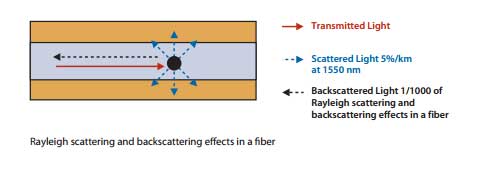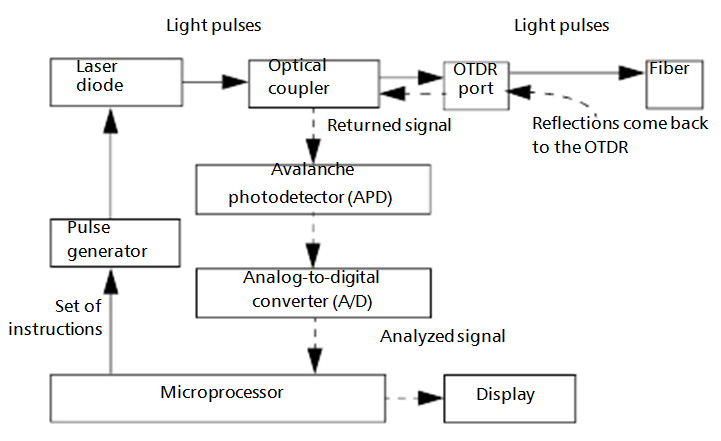OTDR Theory
1. Rayleigh Scattering
Due to manufacturing process, there are particles in optical fiber.
When a pulse of light is sent into optical fiber, the light runs into particles in optical fiber and gets scattered in all directions. This is Rayleigh Scattering. Part of the light is scattered back in the opposite direction of the pulse, which is backscatter.

Rayleigh Scattering is a major factor of fiber loss. Longer wavelengths, less scattering. Shorter wavelengths, higher scattering. For example, Loss at 1550nm is 0.2dB/km due to Rayleigh Scattering, while loss at 1310nm is 0.38dB/km from scattering. Higher density of particles in optical fiber will also cause more scattering and higher attenuation per kilometer. OTDR can measure backscattering accurately and detect variations of optical fiber at any point along the fiber’s length.
2. Fresnel Reflection
When OTDR launches pulse light into optical fiber, the light comes accross material of different density, like air, for example, fiber end, fiber breaks, connector coupling (one connector connects the other connector via fiber adapter), etc. Under these circustances, some of the light is reflected back to OTDR while the rest light continues out of the material. The amount of the reflection depends on the two material density difference (also known as IOR) and the angle that the light enters the interface between the two materials.
This type of reflected light is named as Fresnel Reflection. It is used by OTDR to detect the location of fiber breaks, fiber end and connector coupling.
Index of Refraction (IOR) measures of the bending of a ray of light when passing from one material into another. Larger IOR means higher density.

